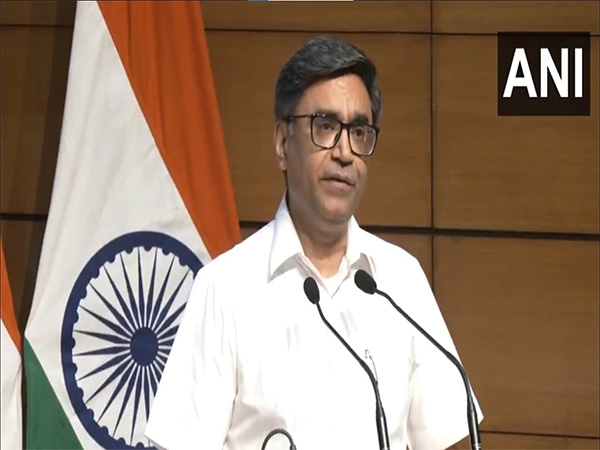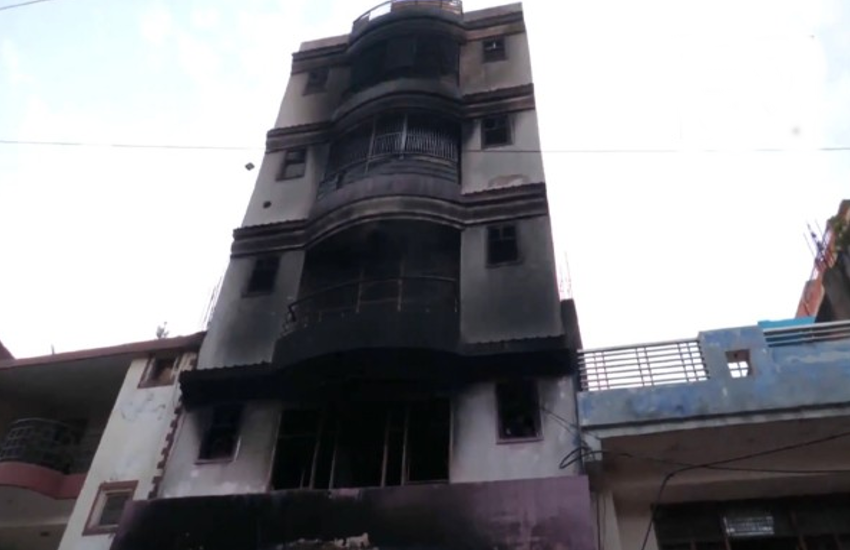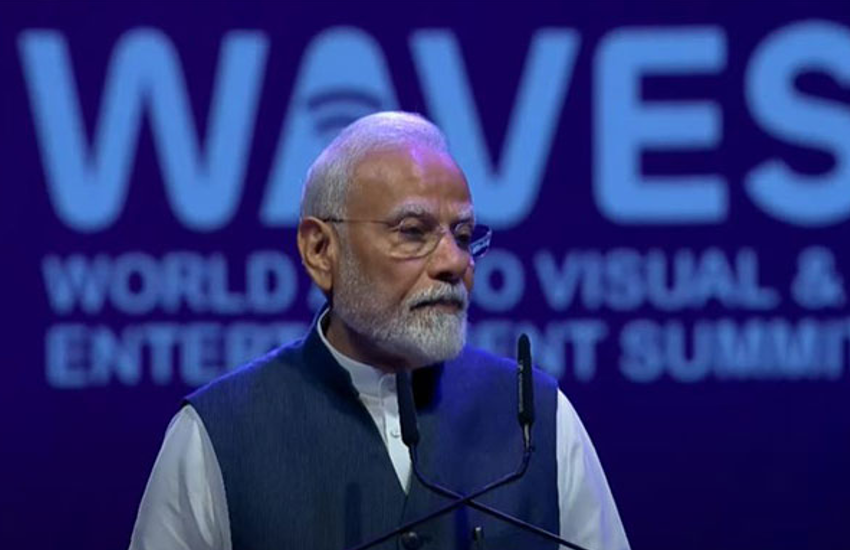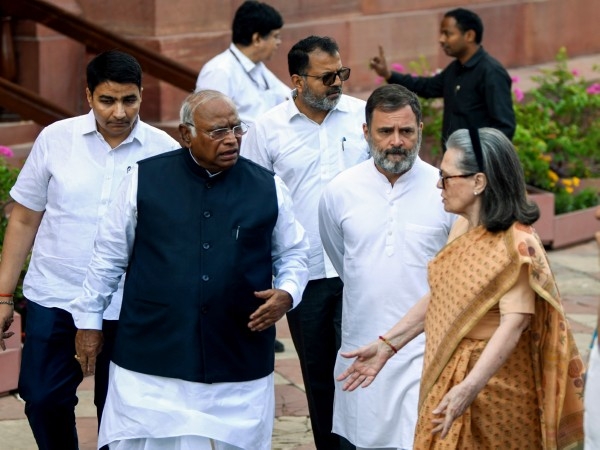Delhi-Mumbai Industrial Corridor to displace 20,000 families, cut 12,000 trees

The politics
- The project\'s backbone, the freight track, is scheduled for completion in 2017
- Brihanmumbai Municipal Corporation elections slated for early 2017
The stakes
- There are allegations that government is trying to acquire 2,70,000 hectares of land against under 10,000 hectares required.
- Loss of food and water security \'fatal\' for state\'s poor and rural sector; loss of green lung lethal for Mumbai
More in the story
- The pros and cons
- Is the project reflective of suit-boot sarkar?
- What does this mean for Mumbai?
The Delhi-Mumbai Industrial Corridor (DMIC), Prime Minister Narendra Modi's ambitious pet project, is expected to uproot more than 12,000 trees and nearly twice as many families in the Thane and Raigad districts of Maharashtra.
The 1,483 km-long stretch between Navi Mumbai's Jawaharlal Nehru Port Trust (JNPT) and Dadri in Uttar Pradesh requires industrial zones to be developed at strategic locations. Promises of increased productivity and employment from the estimated $90 billion mega infrastructure project, touted to be one of the largest in the world, appear to have found few takers in villages along the route.
Their long-running agitations, alloyed with those of social and environmental activists, now look set to make the DMIC a political hot potato for the Centre as well as parties in Maharashtra.
Promises of employment from the $90 billion project finds few takers in villages on the route
Bumps in the Roadmap
While various government departments are busy mooting ways to implement the project, the villagers of Dighi in Raigad - which will see 20,000 families from 24 villages displaced - have refused to part with their lands and have been protesting against the corridor. The Gram Sabha has already written to the standing committee in the Rajya Sabha on the issue.
Noted social activist Ulka Mahajan heads the Sarvahara Jan Andolan, the NGO that fought to get the 10,000-hectare Maha Mumbai Special Economic Zone project cancelled in 2011. Today, it is fighting for the rights of thousands of people from the villages around Dighi port - one of eight investment regions proposed to be developed in Phase I of the DMIC - who would be affected by the project. The NGO has termed the project 'anti-people' and 'anti-environment'.
"The project will affect millions of people. The government is not clear on the intricacies of the project," Mahajan said. "Based on the study we conducted, the project is nothing but a death nail for the people and the ecosystem of the region."
She alleged that the government is trying to acquire 2,70,000 hectares of land as opposed to the less than 10,000 hectares required. Nor, she said, is there a guarantee of employment for the people affected by the project. "The landless farmers would be the worst hit as only those holding land would be considered for employment," she alleged.
In addition, she said the project will be a major threat to food security of the country as the central government is planning five such industrial corridors across the country - four other projects have been proposed between Bengaluru-Mumbai, Amritsar-Kolkata, Chennai-Vizag and Chennai-Bengaluru - and rich agricultural land is on the priority for acquisition.
"The government is planning to acquire rich agricultural land for these projects. The total land requirement for these projects is around 40% of the geographical area of the country," Mahajan said. "Once the agriculture on this area is destroyed, the food security of the country would be under threat."
For the villages around Dighi port, she added, "the activities would definitely prove fatal (as) there is no assured source of water to meet the project's daily water requirement, which has been pegged at 5.5 million litres."
"It is clear that the water resources in the area would be over exploited to meet the requirements, leaving the natives and poor people thirsty," she said.
Loss of Mumbai's green lungs
Besides its human cost, work on the DMIC - which is touted to urbanise 12 per cent of India over the next 30 years - is likely to cause long-term ecological damage. A 1,500 km long 'Western Dedicated Freight Corridor' will serve as its backbone, catering to the planned six airports, 24 'smart cities', 23 manufacturing centres, two electricity generating units, two ports and a six-lane expressway.
The decision of the state forest department to allow the corridor to pass through the Sanjay Gandhi National Park (SGNP) and Tungareshwar Wildlife Sanctuary has drawn flak from environmental groups since it will cut through pristine, eco-sensitive areas in the Dahanu forest in Thane district.
According to sources in the state's forest department, more than 12,000 trees, some of which are a century old, would need to be felled to make way for the freight corridor, which has been given a 2017 completion deadline. About 16.17 and 31.11 hectares of forest land have been de-notified in the Thane and Dahanu divisions respectively.
About 16.17 and 31.11 hectares of forest land have been de-notified in the Thane and Dahanu divisions
Losing this land, especially an estimated 10.55 hectares of the SGNP, could prove lethal to Mumbai. Had it not been for the SGNP, the losses due to the devastating torrential rains in July 2005 and subsequent years in Mumbai would have been increased manifold.
A senior forest officer, who did not wish to be named, said, "The industrial corridor will definitely cause damage to the rich biodiversity of SGNP as well as Dahanu division. It might also add to the man animal conflict due to the disturbance caused due to the construction activities, tree felling and train movement in the future."
"Still, we are trying to mitigate the problem by compensating the loss to tree cover," the official added.
Political hot potato
Even as various government departments are calling for anchor investments and ideas for prospective PPPs are being floated, political parties in Maharashtra have found utility in claiming common cause with those aggrieved by the DMIC.
Taking note of the growing opposition to the rail corridor through the SGNP, Shiv Sena scion Aditya Thackeray has jumped on the naysayer bandwagon, issuing cautions of 'Shiv Sena style' agitations if the government went ahead with the plans.
"We will not allow the destruction of Mumbai at any cost. The government should realign the corridor if it wants to connect JNPT and Dadri. The Shiv Sena will not tolerate any loss to city's biodiversity," Thackeray said.
"The lungs of Mumbai need not be destroyed for the corridor," he added.
Even as the strong stance adopted by the Shiv Sena is being dismissed as yet another effort at one-upmanship in the ongoing tussle between the allies, forest department officials have clarified that the land on which the rail corridor is to be built is already in possession of the railways.
"There already exists a railway track on the land in question. The only difference is that one more track will come up next to it. There is hardly anything the forest department can do to divert the corridor," a senior forest department official said.
Edited by Siddharth Premkumar
First published: 16 March 2016, 6:18 IST





![BJP's Kapil Mishra recreates Shankar Mahadevan’s ‘Breathless’ song to highlight Delhi pollution [WATCH] BJP's Kapil Mishra recreates Shankar Mahadevan’s ‘Breathless’ song to highlight Delhi pollution [WATCH]](https://images.catchnews.com/upload/2022/11/03/kapil-mishra_240884_300x172.png)

![Anupam Kher shares pictures of his toned body on 67th birthday [MUST SEE] Anupam Kher shares pictures of his toned body on 67th birthday [MUST SEE]](https://images.catchnews.com/upload/2022/03/07/Anupam_kher_231145_300x172.jpg)






